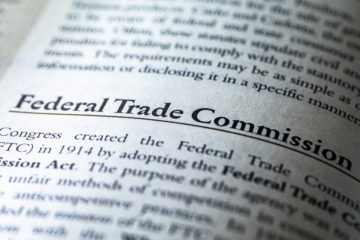The rise of digital assets represents a new frontier in financial innovation, offering individuals the ability to transact freely while reinforcing economic stability. While cryptocurrency has often been viewed as an alternative to traditional financial systems, certain players in the space are demonstrating how blockchain technology can actually bolster the U.S. economy—particularly through stablecoins.
Stablecoins, digital assets pegged to the U.S. dollar and backed by reserves, are quietly becoming a powerful tool in global finance. Companies like Tether, Ripple, and a new collaboration between Robinhood, Kraken, and Galaxy Digital are leveraging stablecoins not only to facilitate seamless digital transactions but also to reinforce U.S. monetary influence worldwide.
As highlighted in the excerpt below from a new article in Real Clear Markets by Market Institute President Charles Sauer, Tether’s massive U.S. Treasury holdings—totaling $113 billion—underscore the potential for stablecoins to enhance demand for U.S. debt, drive down long-term interest rates, and further entrench the dollar’s dominance.
“Digital Assets are the new frontier of “money” and facilitate people making transactions in a free and fair manner. There are some in the space of cryptocurrency that have used technology to make it easier to conduct transactions while also shoring up the U.S. economy.
Although I am no fan of finding ways to purchase U.S. debt, it is important to recognize the threat our expanding debt poses to the U.S. economy and economies worldwide. Interestingly, one way to ease this issue might just be cryptocurrencies – specifically stablecoins.
In fact, there are a few stablecoins already helping out in this way. Robinhood, Kraken, and Galaxy Digital recently came out with a new stablecoin that they created together, and Ripple came out with one of their own as well. Stablecoins solve a lot of problems with the current cryptocoin market which helps drive understanding of the benefits of the blockchain and increases the adoption of the technology. And, they do this while buying U.S. debt.
A great example of a player in the cryptocurrency space helping the U.S. economy while providing security against a debt crisis is the digital asset company Tether. In its recent end-of-year 2024 attestation, Tether announced $13 billion in annual net profits and a staggering $113 billion in U.S. Treasury holdings. It is quietly becoming a geopolitical financial instrument that extends American monetary influence into the digital realm.
Tether’s U.S. Treasury exposure positions it among the largest global holders of these securities, digitally reinforcing the dollar’s global supremacy. By backing its stablecoin, known as USDT, with U.S. government debt, Tether is “long” the U.S. dollar in a profoundly modern sense – transforming traditional treasury management into a 21st-century financial strategy.
Tether’s successes are therefore tightly coupled with the dollar’s strength; for every investor seeking exposure to digital assets via Tether, there is an implicit vote of confidence in the greenback’s global primacy. And by embracing U.S. Treasurys, Tether effectively promotes the dollar’s influence around the world. This bolsters the argument that stablecoins can act as gateways to the broader U.S. financial system.”


